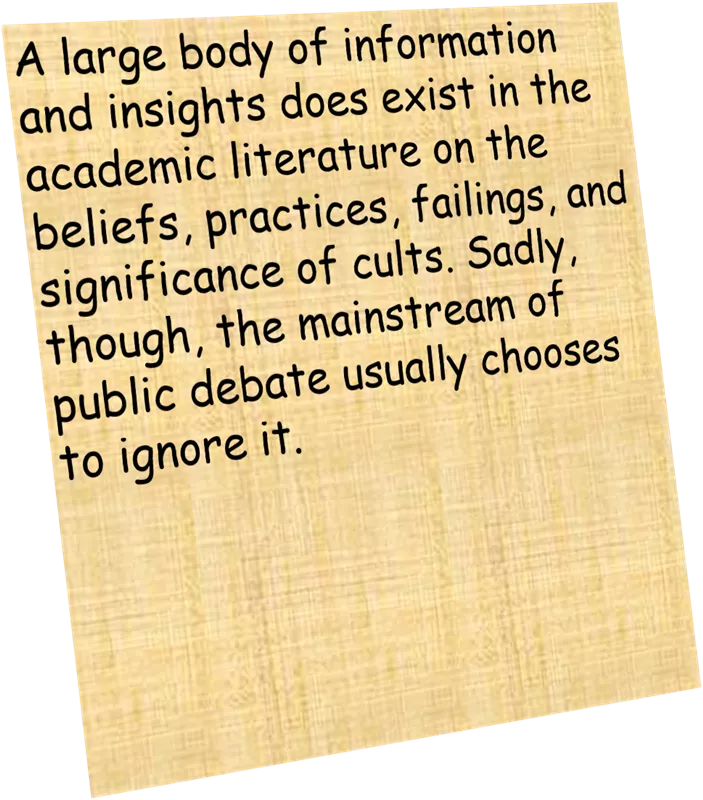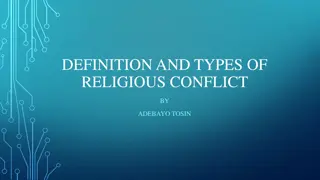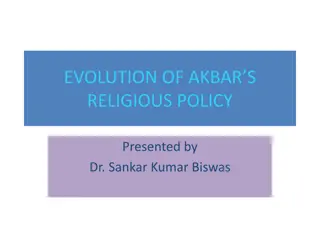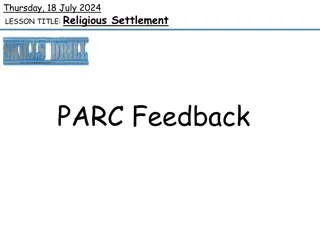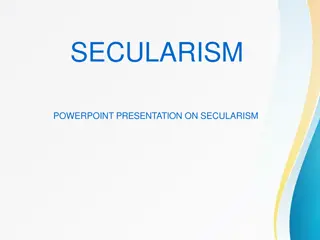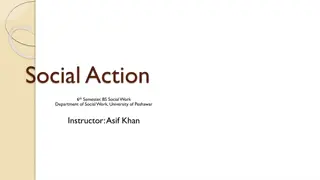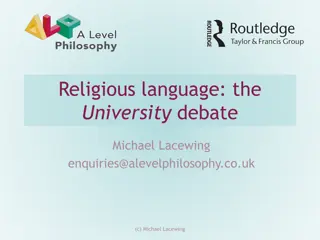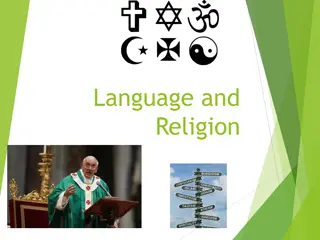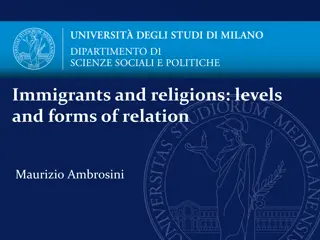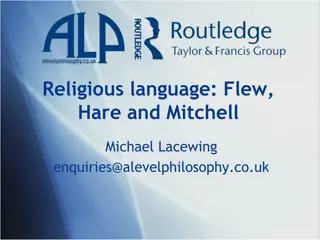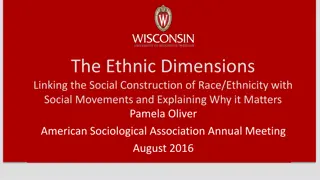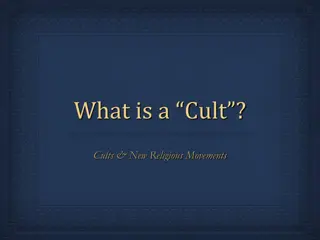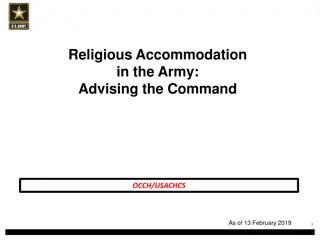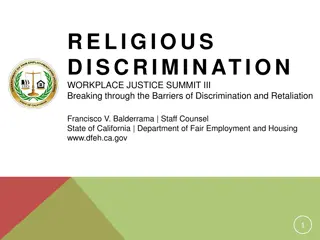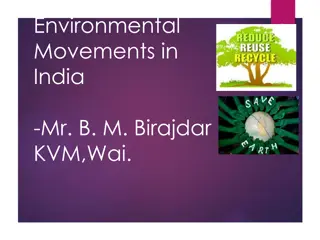Cults and New Religious Movements
Explore the world of cults and new religious movements through discussions on mainstream views, Christian and non-Christian NRMs, biased portrayals, and characteristics that define cults. Discover why studying NRMs is important and what insights they offer into societal beliefs and behaviors.
Download Presentation

Please find below an Image/Link to download the presentation.
The content on the website is provided AS IS for your information and personal use only. It may not be sold, licensed, or shared on other websites without obtaining consent from the author.If you encounter any issues during the download, it is possible that the publisher has removed the file from their server.
You are allowed to download the files provided on this website for personal or commercial use, subject to the condition that they are used lawfully. All files are the property of their respective owners.
The content on the website is provided AS IS for your information and personal use only. It may not be sold, licensed, or shared on other websites without obtaining consent from the author.
E N D
Presentation Transcript
What is a Cult? Cults & New Religious Movements
Agenda Attendance Why study NRMs? Slide 2.
Why study cults and NRMs? What can they help us understand? How do they help us understand it? Slide 3.
Mainstream views of cults Slide 4.
Dawsons Christian NRMs Mormonism independent churches (which do not belong to a particular denomination) groups founded in the ethos of the sixties counterculture (e.g. the Family and other so-called Jesus freaks ) other evangelical, fundamentalist, charismatic, and Pentecostalist churches Slide 5.
Dawsons 5 sets of non- Christian NRMs 1. groups associated with various Asian traditions of philosophy, devotion, meditation, and magic Transcendental Meditation, Elan Vital (formerly the Divine Light Mission), International Society for Krishna Consciousness, Osho Foundation (formerly the Rajneesh Foundation), Soka Gakkai, and Shambhala (formerly Vajradhatu) Erhard Seminar Training (which uses the Latin verb est as its acronym), Scientology, Psychosynthesis, and Silva Mind-Control 2. groups associated with the American human potential movement in popular psychology 3. groups associated with various forms of occult revival Wicca, Hermetic Orthodoxy, and the Church of Satan 4. so-called New Age groups, blending elements of past western esoteric traditions (e.g. the Rosicrucians, Theosophy) with fringe science, alternative medicine, trance channelling, and other things Ramtha and the Church Universal and Triumphant 5. groups that think their salvation depends on contact with UFOs and aliens Heaven s Gate, the Aethurius Society, and the Raelians. Slide 6.
Biased portrayals of cults Media portrayals Dangerous Devotion video (0:00-5:48) What are proposed as cult characteristics? Counter-Cult Movement: Walter Martin on Christian Cults According to Martin, what makes something a cult? Slide 7.
Biased portrayals of cults Biased portrayals of cults Dangerous Devotion video (0:00-5:48) What are proposed as cult characteristics?
Biased portrayals of cults Biased portrayals of cults 1.Counter-Cult Movement: Walter Martin on Christian Cults According to Martin, what makes something a cult?
Dawsons 4 Methodological Concerns 1. We must guard against lumping all new religious movements together. 2. We should be wary of treating new religious movements as unique in history or in Western societies. 3. We must not indulge in reductionistic analyses of these groups. we must acknowledge that new religious movements grow out a desire to satisfy certain spiritual needs of humanity that have a reality and importance independent of our other social and psychological needs. we should look for evidence of a reasonable exchange of investments by the convert in return for rewards from the cult. 4. We should realize that part of the reason for studying new religious movements is that they serve as mirrors for us and our society. Slide 10.
Jehovahs Witnesses Children of Jehovah video We have guest speakers coming next week. Be respectful and try to understand where they are coming from. To prepare, read the chapter on Jehovah s Witnesses by Ashcraft and Daschke, on the Moodle site. Write the online quiz based on this reading. Slide 12.






